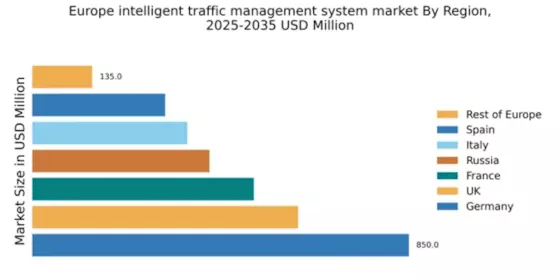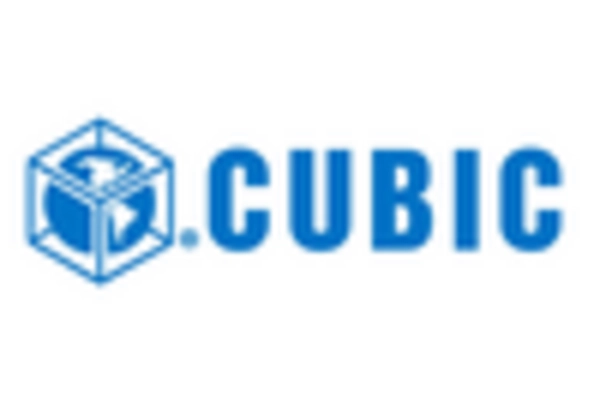Germany : Robust Infrastructure and Innovation
Germany holds a dominant position in the intelligent traffic-management-system market, accounting for approximately 34% of the total European market with a value of $850.0 million. Key growth drivers include significant investments in smart city initiatives, stringent regulatory frameworks promoting sustainable transport, and a rising demand for efficient traffic solutions. The government has launched various initiatives aimed at enhancing urban mobility and reducing congestion, supported by advanced infrastructure development in major cities like Berlin and Munich.
UK : Focus on Smart City Initiatives
The UK market for intelligent traffic management is valued at $600.0 million, representing about 24% of the European market. Growth is driven by increasing urbanization, government initiatives aimed at reducing carbon emissions, and the adoption of smart technologies. The UK government has implemented policies to support the integration of intelligent transport systems, enhancing traffic flow and safety across urban areas. Demand for real-time data analytics and adaptive traffic signals is on the rise, reflecting changing consumption patterns.
France : Government Support and Innovation
France's intelligent traffic-management market is valued at $500.0 million, capturing around 20% of the European market. Key growth drivers include government support for smart mobility projects, urbanization, and the need for improved traffic efficiency. The French government has introduced various initiatives to promote sustainable transport solutions, including funding for smart infrastructure in cities like Paris and Lyon. The demand for integrated traffic management systems is increasing, driven by the need for real-time data and analytics.
Russia : Investment in Infrastructure Development
Russia's intelligent traffic-management market is valued at $400.0 million, accounting for approximately 16% of the European market. Key growth drivers include significant investments in infrastructure, urbanization, and government initiatives aimed at modernizing transport systems. The Russian government is focusing on enhancing road safety and traffic efficiency, particularly in major cities like Moscow and St. Petersburg. The competitive landscape features both local and international players, with a growing demand for advanced traffic solutions.
Italy : Focus on Sustainable Transport Solutions
Italy's market for intelligent traffic management is valued at $350.0 million, representing about 14% of the European market. Growth is driven by urbanization, government initiatives promoting smart transport, and the need for improved traffic management. The Italian government has launched several projects aimed at enhancing urban mobility, particularly in cities like Milan and Rome. The competitive landscape includes both domestic and international players, with a focus on integrating technology into existing infrastructure.
Spain : Government Initiatives and Urban Growth
Spain's intelligent traffic-management market is valued at $300.0 million, capturing around 12% of the European market. Key growth drivers include urbanization, government support for smart city projects, and the increasing need for efficient traffic management. The Spanish government has implemented various initiatives to promote sustainable transport solutions, particularly in cities like Barcelona and Madrid. The demand for innovative traffic management systems is rising, reflecting changing consumption patterns and urban challenges.
Rest of Europe : Varied Growth Across Sub-regions
The Rest of Europe market for intelligent traffic management is valued at $135.0 million, accounting for about 5% of the total European market. Growth drivers vary significantly across sub-regions, influenced by local government policies, urbanization rates, and infrastructure development. Countries in this category are increasingly adopting intelligent traffic solutions to address local challenges. The competitive landscape features a mix of local and international players, with a focus on tailored solutions for specific regional needs.


















Leave a Comment